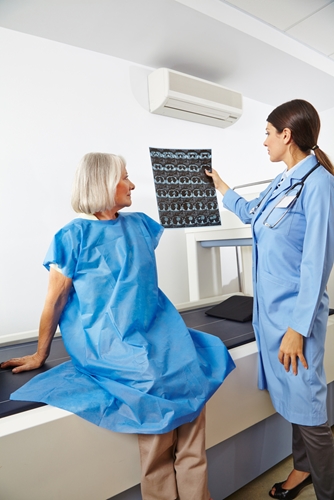With advancements in medical imaging, the efficacy of diagnostics has experienced a significant overhaul. Improved PACS rely on modern-day technology to not only provide clearer images of the human body, but also deliver them at a lower radiation dose with fewer instances of repeated exams.
Radiologists and patients are not alone in witnessing these benefits firsthand, as surgeons also can conduct better procedures because of bolstered imaging techniques. According to Diagnostic Imaging, the relationships between surgeons and radiologists often puts them together in the operating room to ensure that results are leveraged accurately during the operation. Working in tandem, these physicians can ensure that the quality of care being delivered to patients is fully optimized.
“There is definitely more of the back-and-forth collaboration between surgeons and radiologists that people had not seen before,” said Oren Tepper, M.D., plastic and reconstructive surgeon at Montefiore Medical Center, quoted by the news source. “There is an increasing desire and a need to sit and go over the films together.”
Before the days of modern PACS systems, which promote increased coordination and image sharing among hospital departments, patients would need to be taken to the radiology suite for exams and brought back to the operating room for further inspection. Today, radiologists and surgeons can review images together in the OR to facilitate decision making. Real-time input from both physicians can also put patients who are stressed about surgery at ease, knowing doctors from all corners of the facility are collaborating to ensure their safety.
Respecting case schedules
At the Beth Israel Deaconess Medical Center, radiologists and surgeons coordinate their schedules to accommodate each other. Additionally, they have a console on-site in the OR for imaging specialists to pull up 3-D scans of the operative field to make sure the procedure is as minimally invasive as possible.
As digital tomosynthesis becomes more popular, communication between these physicians could improve as exam results can be more easily explained. The comprehensive scans allow for increased diagnostic capabilities by presenting a 3-D image that facilitates clear understanding of the conditions that ail patients.
CT scans aid in stroke treatments
The National Stroke Association explains that strokes occur when a blood clot blocks an artery or a blood vessel breaks, which interrupts blood flow to areas of the brain. As a result, brain cells begin to die and significant damage can occur.
During a presentation at the International Symposium on Multidetector-Row CT, Michael Lev, M.D., director of emergency neuroradiology at Massachusetts General Hospital, discussed how CT technology has contributed to advancements in the decision making process that determines whether patients can be safely treated with intravenous tissue plasminogen activator (IV-tPA) or other clot-retrieval techniques. Administering this treatment is crucial to improving the health of stroke victims, as it must be made quickly in the emergency room, AuntMinnie.com reported.
Radiologists look for imaging targets that facilitate their treatment recommendations. CT has proven to be a deciding factor in identifying these markers. The difficulty lies in protecting patients from any adverse reactions to IV-tPA and ensuring that they receive adequate treatment from their doctors.
“We get an unenhanced CT, and if the patient is within three to 4.5 hours of stroke onset, they are otherwise IV-tPA eligible, and there is no bleed, they get IV-tPA,” said Lev, also professor of radiology at Harvard Medical School, quoted by AuntMinnie.com.
Because it takes up to 10 minutes to prepare the formula for tPA, radiologists are given enough time to conduct a CT scan that indicates whether arteries are clotted and shows how patients will react if those blockages are not treated. As more studies are conducted into the efficacy of IV-tPA and CT combination treatments, stroke patients could experience improved health outcomes.
Contact Viztek for more information.
Ronny Bachrach
Latest posts by Ronny Bachrach (see all)
- Konica Minolta Debuts First-of-Its-Kind Digital U-Arm System at AHRA - July 27, 2016
- Researchers Detect Signs Of Stroke Risk Using MRI - June 27, 2016
- Imaging Biz: Q&A with David S. Channin MD: How to Make PACS Patient Centered - June 22, 2016










